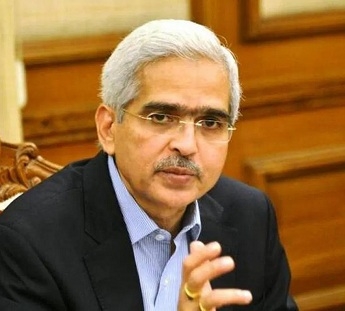key sectors
| Date :29-Jul-2020 |

THAT India’s economy can be “restarted” very well by stepping up investment in infrastructure sector, is a correct assessment by Mr. Shaktikanta Das, Governor of the Reserve Bank of India (RBI), while addressing the India Inc at the Confederation of Indian Industries. Mr. Das asserted that both, the public and private, sectors will have an important role to play in sprucing up the infrastructure sector to propel the country’s economic growth. This identification of a critical growth area by no less a person that the RBI Governor at this stage is of a great significance. For, it demonstrates the direction which India’s efforts of economic recovery will take in the coming times.
Mr. Das is right when he stresses that the massive investment that the infrastructure sector will consume will act as a force-multiplier for the economy. He uses a poetic word -- reignite -- to suggest the effect good investment in infrastructure sector will have on economic growth particularly in the atmosphere severely affected by the coronavirus pandemic. Mr. Das also talks of agriculture as another bright spot in the economic scenario. He talks of recent reforms the Government effected in agriculture sector as openers of big opportunities. “Fortune is shifting in favour of the farm sector in the economy”, he asserts, giving good enough of an idea of the domains through the trajectory of economic growth would move in the near as well as far future.
This stress on agriculture is expected to boost not just gainful employment but also meaningful investment of massive size. It is important at this stage to understand the actual needs of both these sectors -- infrastructure and agriculture. In the past 5-6 years, the national infrastructure sector has seen a far more systematic growth than anytime in the past seventy years since Independence. The push the Government has provided to task of infrastructure development has proved useful and successful, thanks to the practical and dynamic leadership at strategic and operational levels. But if this sector is to carry on in this fashion, it will need not just massive investment but also proactive and committed involvement of ethical ideas. It is common experience that massive investments also open up corrupt possibilities. If this sector is to act as a true growth engine for the economy, then its growth will have to be monitored strictly on high ethical standards so that each rupee invested brings back appropriate return. A more or less similar logic is applicable also to agriculture sector.
Mere investment will not make much difference, unless a serious attempt is made to reinvent the traditional wisdom that once made Indian agriculture global leader for centuries when other parts of the world languished in backwardness. For, in the past seventy years, the Government pumped a lot of money into the farm sector, but to little avail. If this trend is to be changed positively, then we will have to know what actually made ancient Indian agriculture a role model for the world. A little examination of the historical realities will reveal an altogether unified approach to a distinct societal culture that hosted farming as one of the focal points of collective activity.
There may be still some elements that may talk of changed perception in modern times. But that will be only a over-sued narrative that actually says little by way of substance. Technology has changed, and so has its application and final outcome. Yet, even as we think of using technology to boost the farm sector, we can only ill-afford to ignore the human factor that actually made all the difference to agriculture. The human factor had given Indian agriculture its soul, minus which everything would be fruitless. When reforms would create a better ground for growth of the farm sector, the human component must never be lost sight of -- not just from the point of view of employment, but also from the angle of creative contribution of fresh, pulsating ideas that will make our fields plush and lush green again.
